
The National Shrine of Our Lady of Madhu
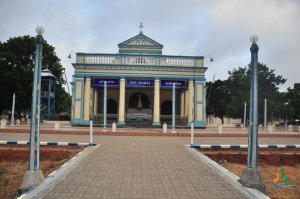
The National Shrine of Our Lady of Madhu located in the town of Madhu, Sri Lanka has a history that dates back to the century when the Portuguese ruled. Originally a modest church it gained importance. Was dedicated to the Virgin Mary during the era in the late 17th century. Over time this shrine has remained a revered place believed to house a statue of Our Lady of Madhu. In years during Sri Lanka’s civil conflict the Madhu Church became even more significant as it offered refuge and tranquillity to people from different backgrounds amidst the turmoil. Today it serves as a beacon of hope, unity and spiritual comfort, for pilgrims regardless of their religion or ethnicity.
Doric Bungalow
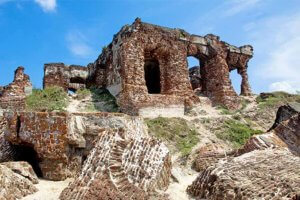
In Sri Lanka there is an architectural treasure called the Doric Bungalow. It represents the influence of design during that era and showcases a fusion of British aesthetics with adaptations for the local tropical climate. These bungalows were quite popular in the early 20th centuries featuring a single story layout with a veranda supported by elegant yet simple Doric style columns. With their ceilings, windows and wide eaves these residences were intelligently designed to combat the island’s heat and humidity. Constructed using sourced materials like wood and brick the Doric Bungalow serves as a symbol of Sri Lanka’s colonial history while preserving its architectural heritage, for future generations to appreciate.
The Mannar Fort
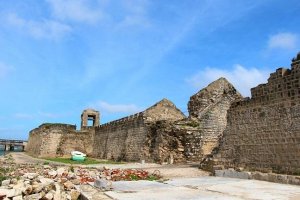
The Mannar Fort, situated in the Mannar District of Sri Lanka is a site that has been around since the time of Portuguese rule. Constructed in 1560 by the Portuguese it was later modified by both the Dutch and British during their periods. The forts location, near Adam’s Bridge, which’s a series of sandbanks between Mannar Island and mainland India gives it an importance. Its architecture showcases a blend of styles influenced by colonial powers. Today the Mannar Fort stands as a testament to Sri Lanka’s history and serves as an intriguing destination, for history enthusiasts and visitors exploring the region.
The Baobab Tree
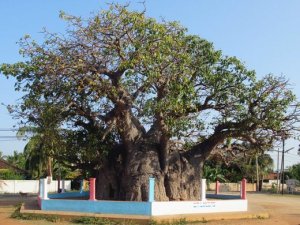
The Baobab Tree located in Pallimunai, Sri Lanka is a combination of beauty and historical significance. With an estimated age of, than 700 years this ancient Baobab tree has witnessed transformations and significant events throughout human history. Its existence in Sri Lanka can be traced back to the trade routes possibly introduced by traders who brought Baobab seeds to the island. These seeds found a habitat in the Mannar region, where the tree adapted and flourished over many generations becoming an integral part of the local ecosystem and cultural heritage. The trees twisted. Majestic trunk bears witness to the passage of time and the blending of cultures making it not only a symbol of history but also a cherished natural treasure, in Pallimunai, Sri Lanka.
The Donkey Clinic & Educational Centre
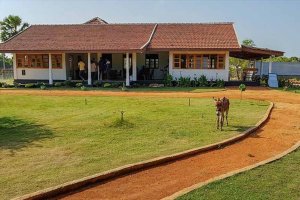
The Donkey Clinic & Educational Centre, in Sri Lanka holds significance as it represents a significant step forward in acknowledging the crucial role and welfare of donkeys in the country. Throughout history donkeys have been vital for transportation and activities in Sri Lanka. However their well being and importance were often. Disregarded. The establishment of this centre marks a moment highlighting the necessity for care and attention towards donkeys. It showcases a shift towards an informed approach bridging the gap, in understanding their essential role throughout the nation’s past and present.
The Mannar Railway Station

The Mannar Railway Station has significance as it is a remnant of Sri Lanka’s railway heritage. It was built during the time of colonial rule. Served as a vital transportation hub connecting Mannar Island to the mainland. This station played a role in facilitating the movement of goods, salt and other products from the Mannar region.
That railway station stands as a symbol of influence on Sri Lanka’s infrastructure showcasing colonial architecture. Although the railway network in Mannar is no longer operational, the presence of the Mannar Railway Station reminds us of the island’s ties to the world through railways. It offers a glimpse into its transportation systems and highlights how colonial rule shaped its development.
The Talaimannar Pier Railway Station
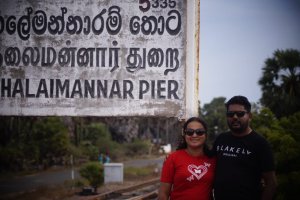
The Talaimannar Pier Railway Station is a landmark from the time of British colonial rule. It served as the endpoint for a railway line that connected Mannar Island to mainland Sri Lanka. Constructed in the century this station played a role in transporting various goods, particularly salt which was an important commodity from the Mannar region. Its strategic location, connected to a pier, facilitated transfer of cargo between trains and ships thereby boosting trade and commerce. Although it is no longer operational, this station remains as a reminder of Sri Lanka’s transportation history and the economic impact of colonialism on the island.
The Talaimannar Lighthouse
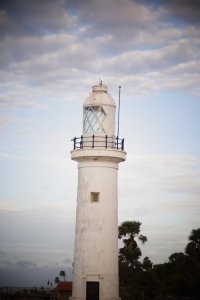
The Talaimannar Lighthouse, located in Mannar, Sri Lanka is a symbol of the colonial era, during British rule. It was constructed to guide and protect ships sailing through the Gulf of Mannar which was a trade route. This lighthouse played a role in Sri Lanka’s history by ensuring the safety and progress of activities in this strategically important area. Today the Talai Mannar Lighthouse stands as a reminder of the island’s rich maritime heritage and its enduring historical importance.
Adam’s Railway Bridge (It is not accessible by boat)
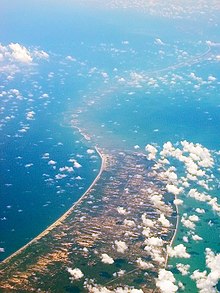
Adam’s Railway Bridge, also known as Adam’s Bridge or Rama’s Bridge holds geographical significance, in the Palk Strait situated between Tamil Nadu, India and Mannar Island Sri Lanka. According to Hindu mythology it is believed to be the remnants of a bridge constructed by Lord Rama’s army during the Ramayana to reach Lanka. This unique bridge comprises limestone shoals and sandbanks. Is often referred to as a geological formation.
In times during the British colonial era there were proposals to construct a railway bridge on Adam’s Bridge in order to connect Mannar Island with the mainland. However these plans were never realised, leaving behind this formed structure. The bridge continues to captivate attention due to its association with Hindu mythology as well as its fascinating geological and geographical attributes.
Adam’s Grave
The Thambapavani Wind Farm
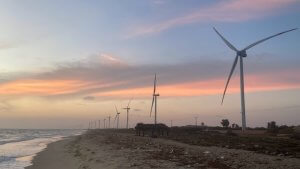
The Thambapavani Wind Farm, located in the Mannar District of Sri Lanka is a shining example of the country’s dedication to energy. Strategically positioned in an area renowned for its powerful winds this wind farm demonstrates Sri Lanka’s commitment to renewable energy. By harnessing the power of wind it plays a role in reducing reliance on renewable sources and aligning with global environmental objectives. The establishment of the Thambapanni Wind Farm marks a milestone towards creating a greener energy landscape in Sri Lanka.
Wilpattu National Park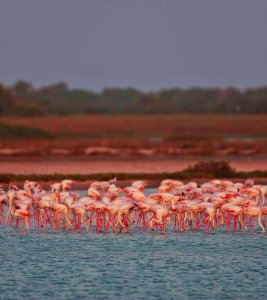
Located on the coast of Sri Lanka Wilpattu National Park is an expansive and ancient wildlife sanctuary renowned for its variety of ecosystems. Being one of the largest parks in the country, Wilpattu showcases a remarkable landscape consisting of dense scrublands, natural lakes called “villus ” and diverse forest types. The park’s biodiversity is truly exceptional providing a home to a range of wildlife including Sri Lankan elephants, leopards, sloth bears, spotted deer and various species of birds. Exploring the park through tours offers visitors an opportunity to witness these magnificent creatures in their natural environment. Additionally Wilpattu holds cultural significance with scattered ancient ruins and sacred sites that add an intriguing aspect to its natural charm.
Worship of Atamasthana
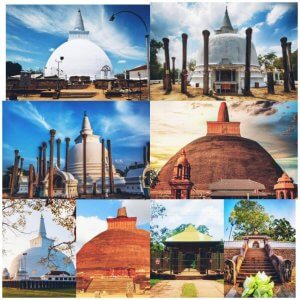
The Atamasthana, which means “Eight Sacred Places” encompasses a collection of pilgrimage sites in Sri Lanka that hold cultural and religious significance. These revered locations are deeply connected to the life of Lord Buddha. Mark events from his three visits to Sri Lanka.
Among the sites included in the Atamasthana are Jaya Sri Maha Bodhi, Ruwanwelisaya, Thuparamaya, Lovamahapaya, Abhayagiri Vihara, Jetavanarama, Mirisaveti Stupa and Kataragama Devalaya. People embark on pilgrimages to these places to pay their respects, engage in meditation practices and seek blessings. It is a journey for Buddhists and an enriching cultural experience for those, in exploring Sri Lanka’s Buddhist heritage.
Included
Excluded